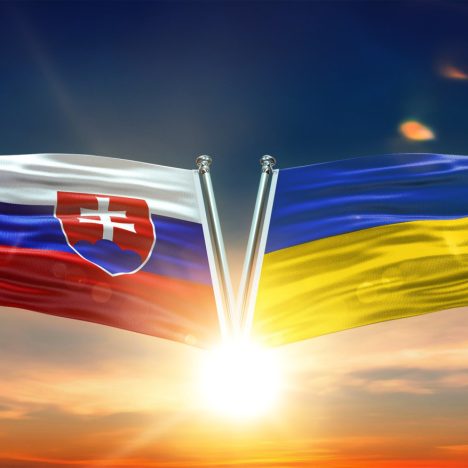Even though Zakarpattia does not always get media coverage because of positive developments in relations between Ukraine and its western neighbors, the country’s westernmost oblast could assume the role of the main regional stepping stone for Ukraine on its way to the European and Euro-Atlantic integration and cooperation.
This Ukrainian region was the last to become part of the Soviet Union and was not the subject of the Soviet yoke as long as other regions. Instead, during the 20th century Zakarpattia was part of the Habsburg empire, Czechoslovakia and Hungary. In the Zakarpattia oblast Ukraine borders 4 members of the EU and NATO. Over 10 European capitals are located closer to Uzhhorod than Kyiv.
Thanks to the historical multiculturalism and polyethnicity of Zakarpattia, the region constitutes an ideal place for multicultural dialogue and cohesion, which form one of the main pillars of the EU.
Despite the shockingly massive emigration from the region, many local residents travel to the EU for paid work. Not only do they return to Ukraine with money, they also gain experience working abroad and get used to the standards of living common in the EU. It is also worth remembering that the Zakarpattia oblast is a region of active international contacts. It hosts not only two Hungarian consulates, but also Slovak and Romanian consulates each, three Czech, Slovak and Lithuanian honorary consulates. Recently, the representative office of the Ministry of Foreign Affairs of Ukraine has resumed its work in the region.
At the heart of the EU lies commerce. In the last few years Zakarpattia has taken a leading position among all of Ukraine’s regions by the volume export of goods to the EU, which invariably stands at 90%. This rate exceeds that shown by other western regions of Ukraine, which means that the region is home for close international business contacts.
The region also offers a few interesting opportunities for cooperation with NATO.
Back in the Soviet times the Zakarpattia oblast was deployed as a location for strategic military units (a military airfield in Mukachevo, radio detection station “Dnipro”, air defense complex near Berehove, etc.).
The region now hosts one of the most powerful military brigades of Ukraine, the 128th separate mountain assault brigade, which has fought in the fierce battle of Debaltsevo. The military infrastructure of Zakarpattia is already deployed by the Armed Forces of Ukraine as a place for domestic troop exercises. It could also be used for military training exercises in the region under the auspices of NATO. Incidentally, such exercises already took place here in 2014 organized by the Multinational Engineer Battalion “TISA” (Blonde Avalanche).
Does Ukraine make the full use of the opportunities offered by Zakarpattia to promote the country’s European and Euro-Atlantic integration? Of course not.
It is worth mentioning that this is not the full list of the region’s advantages.
You can learn more about how Ukraine could integrate itself into the EU in terms of infrastructure and investment in separate publication of this issue.
Not only smuggling: Why Zakarpattia may become Ukraine’s new investment hub
Transnational opportunities
Few are aware of the fact that the Zakarpattia oblast is the only region in Ukraine that has the opportunity to participate in all 4 programs of transnational cooperation with the EU that are funded by the EU. These are – Poland-Belarys-Ukraine, Hungary-Slovakia-Romania-Ukraine, Romania-Ukraine and the Danube transnational program.
By way of comparison – the Lviv oblast can only participate in the first of the programs mentioned above.
In other words, no other oblast on Ukraine has so many opportunities for transnational cooperation with the framework of the EU programs.
Furthermore, it is in Zakarpattia that the Association “Euroregion. The Carpathians – Ukraine” launched its activities in 2008. This is a national representative association of the Carpathian Euroregion that unites 16 million people residing in 5 countries of Central and Eastern Europe – Ukraine, Poland, Romania, Slovakia and Hungary.

In 2015 the Zakarpattia oblast received another instrument for attracting funds from the EU. The European Association of Territorial Partnership with limited liability “TISA” ((EGTC Tisza) was registered in Brussels. The Association is comprised of the Hungarian border area of Szabolcs-Szatmár-Bereg, the town of Kisvárda and the Zakarpattia oblast.
Ukraine’s greatest hopes are pinned on this Association that might help launch the waste sorting line at full capacity in the village of Yanoshi near Berehove, which will, in turn, help drive the problem of waste (that has in the meantime taken on an international dimension ) in the Zakarpattia oblast from the deadlock.
What can and should be done
In order to take advantage of all these opportunities and to create new ones, Zakarpattia needs to mobilize its resources, both internal and external.
Obviously, a significant increase in export will not happen at any one’s whim. A lot of investment is required to hold military training exercises under the auspices of NATO, which would also take several years to prepare. Not much is required to open a cultural dialogue in Zakarpattia about Europe in Ukraine involving the country’s establishment and partners from the neighboring EU-countries except for political will – the more so as there are many reasons for this.
For instance, if Europe Day is annually celebrated throughout Ukraine in May, why not also hold the celebrations in Zakarpattia apart from Kyiv? After all, it is here in the Rakhiv region that the symbolic sign of Europe’s geographical center is located.
This could be the Ukrainian version of the forum in the Polish town of Krynica. It is exactly in this direction that the team of the forum Re: Open Zakarpattia is ready to develop its own platform.
Regarding the projects of transnational cooperation, Ukraine in general and Zakarpattia in particular should demonstrate their determination and leadership as the new 7-year stage of programs is about to commence (until 2028).
In this regards, following steps would appear reasonable:
- To develop a new program of transnational cooperation and support of these projects at the level of the oblast council exactly for the period of 2021-2028.
- To advocate the bills to be passed in the parliament that would cancel the VAT imposed on transnational projects together with Ukraine’s neighboring regions. This has already been the case with the Polish 100-million Euro loan for the development of the border infrastructure.
- The Ukrainian government should in earnest direct its attention to the support of transnational projects either at the level of the Government’s Secretariat, or the Ministry of Communities and Territory Development, or Vice-Prime-Minister for European and Euro-Atlantic Integration, or the government can establish a separate institution for this purpose. For instance, the Central European Service for promoting transnational initiatives has been established in Hungary (CESCI). The key purpose of this institution lies in enhancing the region’s capacity in implementing transnational cooperation projects, promoting institutional memory and supporting the state.
- To open up an office for Eurointegration in Zakarpattia that would be analogous to the ones already existing in the cities of Kherson and Dnipro. These offices perform a coordination function between the state authorities and the civil society. Zakarpattia has a severe lack of such coordination. The initiative for establishing such an office should come from the region.
On the whole, as the former Lithuanian Prime Minister and now the respected MEP, Andrius Kubilius, said at the forum Re:Open Zakarpattia, Ukraine should make the full use of its historical and cultural connections in such regions as Zakarpattia in order to form a political Carpathian coalition of neighboring countries that would become not only Ukraine’s friends and advocates in the EU, but would also lobby its integration both into the EU and NATO.
This idea is by all means quite ambitious.
However, there is every precondition for Ukraine to try to put this idea into practice in Zakarpattia.
Dmytro Tuzhanskyi is director of the Institute for Central European Strategy (Ukraine)





